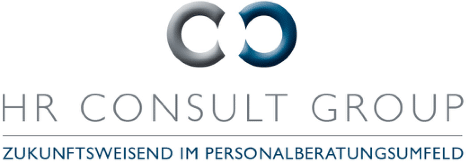A key to employee retention and motivation is the design of competitive remuneration models. Compensation is much more than just a paycheck at the end of the month; it is an integral part of the overall package that companies offer their employees. The right incentives create motivation, strengthen loyalty and support the growth of the organization.
What does "competitive remuneration" mean?
Competitive remuneration means that the level and structure of the remuneration offered is comparable to or better than that offered by competitors in the market. Such a remuneration model takes into account not only the basic salary, but also bonuses, fringe benefits, share options, pension plans and other benefits such as flexible working hours, home office options or training opportunities.
Designing a competitive remuneration model requires more than simply raising salaries. Rather, it is about developing a system that takes into account both the company's objectives and the needs and expectations of employees.
The elements of a competitive remuneration model
- Base salary: The base salary forms the basis of a remuneration model. It should be in line with the market and performance-oriented. It is important to take industry-specific salary fluctuations into account and to regularly compare salaries in order to stay up to date.
- Variable remuneration components: Bonuses, commissions or performance-related awards are key components of an attractive remuneration model. These components reward above-average performance and motivate employees to achieve or exceed their targets.
- Company pension scheme and health benefits: These benefits are almost indispensable today. A company pension scheme not only signals care for the long-term future of employees, but also strengthens loyalty to the company. Health benefits, such as supplementary insurance or health promotion programs, increase the company's attractiveness as an employer.
- Employee shares and profit-sharing: Share options or profit-sharing schemes are particularly popular in larger companies and start-ups. These models closely link the interests of employees with the long-term success of the company. Employees feel more involved and have the feeling that they benefit directly from the company's success.
- Flexibility and work-life balance: In addition to the financial component, non-monetary factors also play a decisive role. Flexible working hours, home office options or additional vacation days are attractive benefits that are becoming increasingly important in many companies. They not only promote satisfaction, but also contribute to the long-term health and motivation of employees.
Importance of transparency and fairness
A competitive remuneration model must be transparent and fair. Transparency means that employees can understand the criteria for salary increases, bonuses or promotions. This creates trust and a sense of fairness within the company. Clear communication about the remuneration guidelines is crucial to avoid misunderstandings and frustration.
Fairness refers to similar positions being paid comparably, regardless of gender, origin or other non-performance-related criteria. Inequalities in pay can not only cause legal problems, but also lead to dissatisfaction and higher staff turnover.
The role of corporate culture
A well-designed remuneration model is closely linked to the corporate culture. Companies that foster a culture of appreciation and respect often have less difficulty attracting and retaining talent. This is because employees feel that their performance is valued - not only financially, but also through other forms of recognition.
Intangible factors such as regular feedback, development opportunities and a supportive working environment also contribute to employees feeling comfortable in the company. These cultural aspects should go hand in hand with the remuneration model in order to create a holistic, motivating and attractive working environment.
Challenges in the design of a remuneration model
The biggest challenge is to find a balance between corporate goals and employee expectations. On the one hand, companies must be competitive and offer sufficient incentives to attract and retain talented employees. On the other hand, the costs of the remuneration model must be in proportion to the company's economic possibilities.
In addition, employees' expectations vary depending on their age, industry and life situation. While younger generations may place more value on flexibility and work-life balance, other employees may be more interested in financial incentives or a long-term company pension plan. Finding the right mix requires sensitivity and regular adjustments.
Conclusion
Designing a competitive remuneration model is a strategic task that is crucial to the long-term success of a company. It is not only about attracting talent, but also about retaining and motivating them in the long term. A successful remuneration model takes into account both the individual needs of employees and the economic conditions of the company. Companies that master this balancing act have a clear advantage in the battle for the best talent and can sustainably increase their competitiveness.




